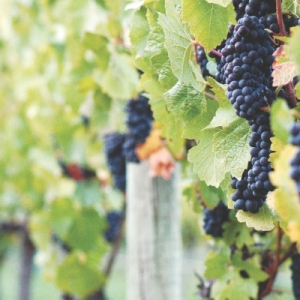It may come as a shock to many locals, especially those unfamiliar with Oregon’s wares, that their Pinot Noirs are exceptional and arguably better than New Zealand’s offerings. Better? Or different?
I’ve not long finished a stint working the 2012 vintage in the Willamette Valley of Oregon. On the back of two wet and cold years, Oregon was due for a warmer season, and conditions were hot, sunny and “completely unseasonable” for most of the harvest. The tendency is usually for drizzly rain to set in, at some stage in autumn and through the winter. The MAR for the region is 1000- 1200mm and the GDD varies from 1000-1400, making it most similar to Nelson’s climate (though with less sunshine hours). The soils are a mix of volcanic and sedimentary, the former more highly prized.
The Willamette Valley AVA (American Viticulture Area) is divided up into six sub-appellations. They are:
Chehalem Mountains AVA
Dundee Hills AVA
Eola-Amity Hills AVA
McMinville AVA
Ribbon Ridge AVA
Yamhill-Carlton AVA
More than 3⁄4 of the vine area is planted out to Pinot Noir. The region was pioneered by David Lett (of Eyrie Vineyards) in 1966, whose 1975 pinot put Oregon on the map at the Gault-Millau Wine Olympics, on the back of similar contests like the Judgement of Paris in 1976 (where California famously beat France in two blind tastings).
So there is history in Oregon. History that has brought the Willamette Valley Pinot Noirs to the world, and history that results in a present day foundation of significant vine age. Is it this vine age that contributes to wines of remarkable pedigree that are able to age gracefully for more than two decades? Or is it something else? Perhaps an inherent structure in the wines, created in the vineyard, shaped by the climate/seasons and fostered by the winemaker? It’s that age-ability in the wines that really surprised me, having been fortunate to try stellar examples (with life remaining) that included the likes of a 1992 Evesham Wood, 1993 Domain Drouhin Oregon and a 1994 Brick House.
Like New Zealand – and Australia for that matter – there doesn’t seem to be any pattern or trend defining the region. They all use varying levels of new oak, they all have their favourite coopers, there is a healthy mix of destemming/whole bunch, different preferences for indigenous and inoculated fermentations, and fairly consistent cropping rates in the vineyard. However, unveil the curtain – look beyond the rhetoric – and there is a stylistic shift towards Pinot Noir that realizes its typicity. It’s slow, but evident, that the days of big and bold are being replaced by finesse and structure, as Oregon winegrowers calibrate themselves and their fruit.
Steve Doerner, of Cristom, explains,
“I think preferences are starting to shift away from where they were just a decade ago, which was bigger is better. In the beginning, part of the big shift towards Pinot Noir was its attraction as an elegant variety, but people still preferred the bigger styles. As time goes on, not only are people more tolerant of elegant wines, they are actually favouring them. I think that trend is happening in other wines as well, not just Pinot Noir.”
Dave Paige, of Adelsheim, agrees, vindicated by his stylistic perseverance,
“Fortunately, I think most Pinot Noir drinkers have a growing appreciation for elegance and complexity. We used to worry more about the image of our Pinot 10 years ago, when the press and consumers still seemed caught up in the bigger is better mode. But we stuck to our guns and couldn’t be happier.”
Josh Bergstrom, of Bergstrom, addresses the shift circumspectly,
“There was a brief fashion for enormous, well-endowed Pinots that is now changing in favour of balance. I don’t know if the newbie to Pinot knows what to expect or what they really want, they just know that they like it. I’m aspiring to make wines that I enjoy for the very long term. Although I am guilty of making brash, opulent wines in my youth, I have now settled into a style that balances the elegant side of opulence as a correct interpretation of the vintage; a place I hope to be for many decades to come, regardless of fad or fashion.”
Nevertheless, achieving this stylistic tightrope is not without its challenges. All winemakers I spoke to had added water to their musts in certain years (the dry-grown evangelists usually the most culpable), and as a marginal climate there are real struggles for ripeness in many years (I heard of Pinot - for still wine - coming in at 19oBrix in 2011). Then, even with a good/great product in bottle, Oregon shares the same sales and marketing hurdles as any region predisposed to premium Pinot Noir.
It’s not quite looking in a mirror, but there is a connection and similarity to it all; as Harry Peterson- Nedry of Chehalem says, “My friends and I view New Zealand Pinot as the third leg of the Pinot Noir stool, along with Burgundy and Oregon”.
And the stool is a comfy one. The Burgundy leg very old, but very sturdy, the Oregon leg just starting to rust with signs of fleck, and the New Zealand leg still quite bright and shiny, waiting for time and age to reveal her destiny, be it a path well-trodden or a journey off the beaten track. ν
This email address is being protected from spambots. You need JavaScript enabled to view it.










